No, that's the interpretation of a risk ratio! Odds ratios While risk reports the number of events of interest in relation to the total number of trials, odds report the number of events of interest in relation to the number of events not of interest Stated differently, it reports the number of events to nonevents Instead of reporting odds ratios, the authors estimated risk ratios and risk differences, measures of association that are more intuitive to interpret What Are Risk Ratios and Risk Differences?

A Most Odd Ratio American Journal Of Preventive Medicine
Risk ratio vs odds ratio vs hazard ratio
Risk ratio vs odds ratio vs hazard ratio-A risk ratio > 1 suggests an increased risk of that outcome in the exposed group A risk ratio < 1 suggests a reduced risk in the exposed group How do you interpret odds ratio? Odds Ratio Vs Risk Ratio Ask Question Asked 2 years, 7 months ago Active 2 years, 7 months ago Viewed 125 times 0 $\begingroup$ Relative risk, odds ratio, risk ratio, risk difference these are all measures of the direction and the strength of the association between two categorical variables Can I use any of these




Risk Estimates Relative Risk Ratio And Odds Ratio Analyses For Download Table
When events are common, as is often the case in clinical trials, the differences between odds and risks are large For example, a risk of 05 is equivalent to an odds of 1; Odds ratio is a measure of strength of association between risk factor and outcome/disease in a case control study It is defined as the ratio of the odds of an event occurring in one group to the odds of it occurring in another group Here the outcome being investigated should not be a common one, the cases must represent those who already hadFigure 1 Relationship between Odds Ratio and Relative Risk for various incidence rates 38 8 166 Int J Public Health 53 (08) 165–167 When to use the odds ratio or the relative risk?
Risk Ratio vs Odds Ratio Whereas RR can be interpreted in a straightforward way, OR can not A RR of 3 means the risk of an outcome is increased threefold A RR of 05 means the risk is cut in half But an OR of 3 doesn't mean the risk is threefold; To the Editor Dr Norton and colleagues 1 described significant limitations of odds ratios (ORs) but they did not report one important advantage of ORs compared with risk ratios (RRs) the magnitude of the association between an exposure and a dichotomous outcome is invariant to whether the outcome is defined as event occurrence (eg, death) or nonoccurrenceOdds Ratio is a measure of the strength of association with an exposure and an outcome OR > 1 means greater odds of association with the exposure and outcome
If the Odds ratio is 07 then it indicates a protective effect – Ie a reduced odds of exposure in case vs control group That reduced risk is 1odds so will be 30 percent reduced risk fo exposure What does an odds ratio of 01 mean?In biomedical research, we are often interested in quantifying the relationship between an exposure and an outcome "Odds" and "Risk" are the most common terms which are used as measures of association between variables In this article, which is the RELATIVE RISK AND ODDS RATIO The relative risk (also known as risk ratio RR) is the ratio of risk of an event in one group (eg, exposed group) versus the risk of the event in the other group (eg, nonexposed group) The odds ratio (OR) is the ratio of odds of an event in one group versus the odds of the event in the other group




Math Formula To Reproduce A Plot Comparing Relative Risk To Odds Ratios Cross Validated




The Difference Between Relative Risk And Odds Ratios The Analysis Factor
Englishwise, they are correct it is the odds and the odds are based on a ratio calculation It is not , however, the odds ratio that is talked about when results are reported The odds ratio when results are reported refers to the ratio of two odds or, if you prefer, the ratio of two odds ratios That is, let us writeThe odds ratio is simply the ratio between the following two ratios The ratio between standard treatment and the new drug for those who died, and the ratio between standard treatment and the new drug for those who survived From the data in the table 1, it is calculated as follows OR = (a/b)/ (c/d) = (152/17)/ Odds ratio vs risk ratio You know the difference between risk and odds A risk is the proportion of subjects with an event in a total group of susceptible subjects Thus, we can calculate the risk of having a heart attack among smokers (infarcted smokers divided by the total number of smokers) and among nonsmokers (the same, but with nonsmokers)




Relative Risk Odds Ratios Youtube
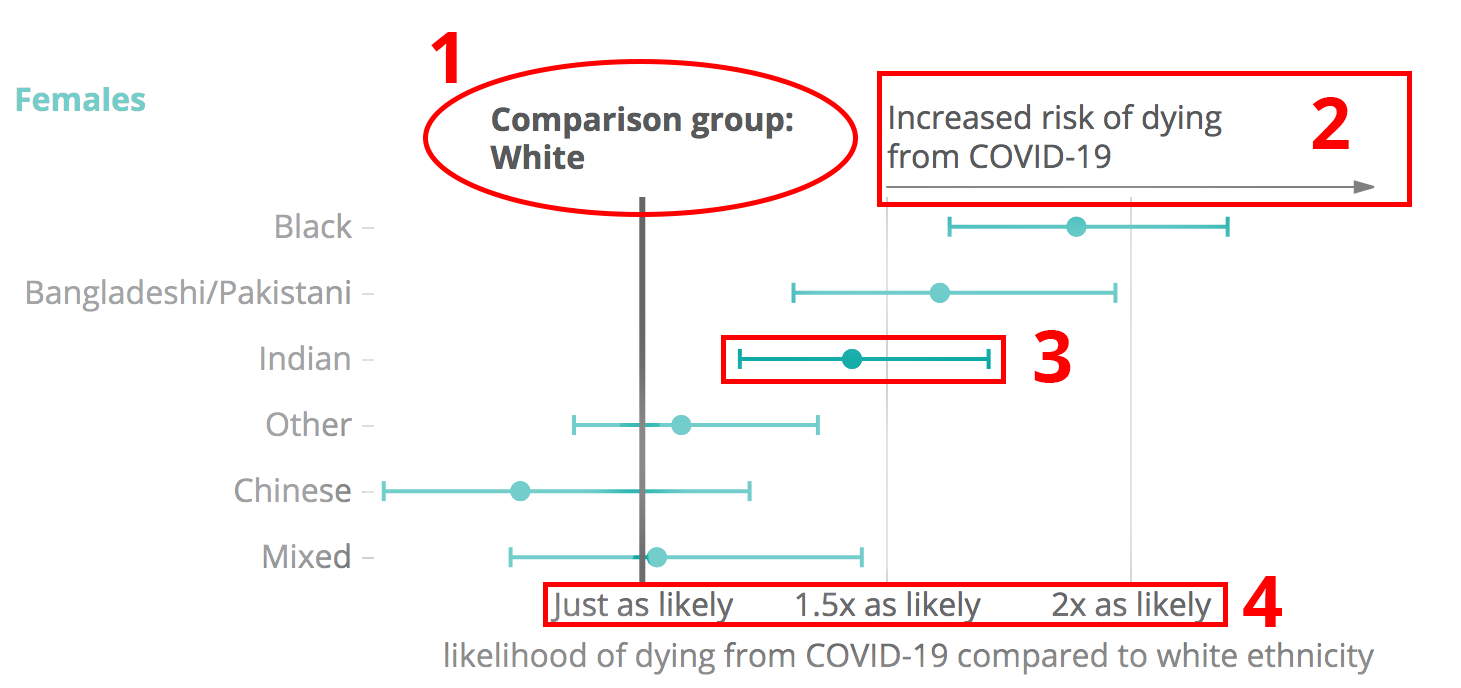



Against All Odds How To Visualise Odds Ratios To Non Expert Audiences Henry Lau
We can define the following terms The odds ratio (OR) is the ratio of the odds of cancer in smokers to the odds of cancer in nonsmokers OR = (a/b)/ (c/d) = (ad)/ (bc) The risk ratio (RR), also called the relative risk, is the ratio of the probability of cancer in smokers to the probability of cancer in nonsmokers For example an odds of 01 is written as 110 and an odds of 5 is written as 51 Risk and risk ratios are more commonly used than odds and odds ratios in medicine as these are much more intuitive Risk describes the probability of an event occurring In medicine this is often an undesirable health outcome or adverse event Risk is usually expressed as a number between zero and 1, although it can also be converted into a percentageThe odds ratio of the second population relative to the first is (1/4)/ (1/9) = 225, ie a ratio of ratios, and roughly, but not quite the same, as the relative risk In fact for rare conditions



Relative Risk Ratios And Odds Ratios
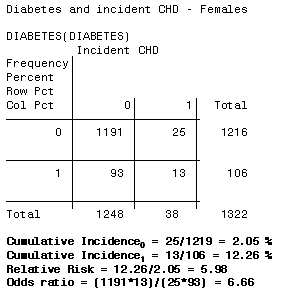



3 5 Bias Confounding And Effect Modification Stat 507
The risk ratio (or relative risk) is the ratio of the risk of an event in the two groups, whereas the odds ratio is the ratio of the odds of an event (see Box 92a ) For both measures a value of 1 indicates that the estimated effects are the same for both interventions Neither the risk ratio nor the odds ratio can be calculated for a study Odds ratio vs relative risk Odds ratios and relative risks are interpreted in much the same way and if and are much less than and then the odds ratio will be almost the same as the relative risk In some sense the relative risk is a more intuitive measure of effect size Note that the choice is only for prospective studies were the distinction This brings us to today's topic Odds Ratio (OR) vs Relative Risk (RR) Odds vs Probability why we love them and why these two cousin statistics continue to confuse us Anyone with a math, science, or medical background has been taught this, and if




Risk Difference Rd Risk Ratio Rr And Odds Ratio Or For The Download Table




Categorical Data Ziad Taib Biostatistics Astra Zeneca February
The risk ratio In practice, risks and odds for a single group are not nearly as interesting as a comparison of risks and odds between two groups For risk you can make these comparisons by dividing the risk for one group (usually the group exposed to the risk factor) by the risk for the second, nonexposed, group This gives us the risk ratioELI5 odds ratio vs relative risk Google search has plenty, but none are ELI5 I'm reading a medical journal which says if a baby poops in the amniotic sac (meconium), the odds ratio for it having problems after birth (respiratory, heart, etc) is 364 Odds ratios While risk reports the number of events of interest in relation to the total number of trials, odds report the number of events of interest in relation to the number of events not of interest Stated differently, it reports the number of events to nonevents




How To Calculate Odds Ratio And Relative Risk In Excel Statology




Literature Search
Relative Risk vs Odds ratioOdds Ratio, Relative Risk, and Risk Difference How to Use Odds Ratio, Relative Risk, and Risk Difference to Describe the Association Between Two CategoricalRelative Risk and Odds Ratio for the obese 3) Overall, you can see that decreasing the baseline incidence will decrease the odds ratio (300 in those who are nonobese versus 129 in those who are obese) Obviously, these results run counter to expected results, putting the onus on the researcher to justify them Similarly, you should find
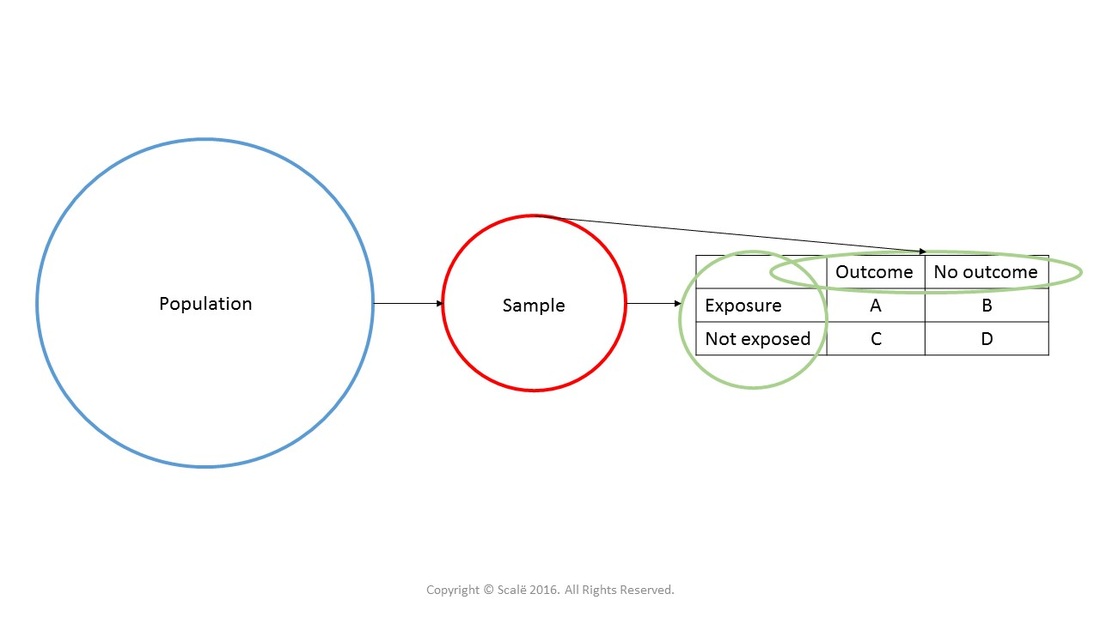



Calculate Relative Risk With 95 Confidence Intervals



Number Needed To Treat
A risk ratio is the probability (or risk) of an outcome in one group divided by the probability in another, whereas the risk difference is the probability of an outcome in one groupOdds ratios (OR) are commonly reported in the medical literature as the measure of association between exposure and outcome However, it is relative risk that people more intuitively understand as a measure of association Relative risk can be directly determined in a cohort study by calculating a risk ratio (RR) The basic difference is that the odds ratio is a ratio of two odds (yep, it's that obvious) whereas the relative risk is a ratio of two probabilities (The relative risk is also called the risk ratio) Let's look at an example Relative Risk/Risk Ratio Suppose you have a school that wants to test out a new tutoring program




Odds Vs Risk Ratio ただの悪魔の画像



Risk Ratio Vs Odds Ratio Hunter 19 Notes And Things
Risk Ratio = CI e /CI u = 090/058 = 155 Interpretation Smokers had 155 times the risk of respiratory disease compared to nonsmokers over an 18 year period of observation Using the same cumulative incidences we can calculate the risk difference, an absolute measure of association Risk Difference = CI e CI u = 090 058 = 032 = 32Using the odds we calculated above for males, we can confirm this log(23) = 147 The coefficient for female is the log of odds ratio between the female group and male group log(1809) = 593 So we can get the odds ratio by exponentiating the coefficient for femaleOdds Ratio, Hazard Ratio and Relative Risk Janez Stare1 Delphine MaucortBoulch2 Abstract Odds ratio (OR) is a statistic commonly encountered in professional or scientific medical literature Most readers perceive it as relative risk (RR), although most of them do not know why that would be true But since such perception is mostly




Odds Ratios Vs Risk Ratios Stats By Slough



Confluence Mobile Wiki Ucsf
Sometimes, we see the log odds ratio instead of the odds ratio The log OR comparing women to men is log(144) = 036 The log OR comparing men to women is log(069) = 036 log OR > 0 increased risk log OR = 0 no difference in risk log OR < 0 decreased risk Odds Ratio 0 5 10 15 More on the Odds Ratio Log Odds Ratio4 2 0 2 4And a risk of 095 is equivalent to odds of 19Risk is the number of those having the outcome of interest (death, infection, illness, etc) divided by the total number exposed to the treatment Odds is the number having the outcome divided by the number not having the outcome The risk or odds ratio is the risk or odds in the exposed group divided by the risk or odds in the control group




Pdf What S The Risk Differentiating Risk Ratios Odds Ratios And Hazard Ratios Semantic Scholar




A Most Odd Ratio American Journal Of Preventive Medicine
Absolute risk, attributable risk, attributable risk percent, population attributable risk percent, relative risk, odds, odds ratio, and others The concept and method of calculation are explained for each of these in simple terms and with the help of examples The interpretation of each is presented in plain English rather than in technical Percent increase = (Risk Ratio lower bound – 1) x 100 Percent decrease = (1 – Risk Ratio upper bound) x 100 It's worth stating again when comparing two proportions close to 1 or 0, the risk ratio is usually a better summary than the raw difference Odds Ratios We now turn to odds ratios as yet another way to summarize a 2 x 2 tableRather the odds is




Odds Ratio Relative Risk Calculation Definition Probability Odds Youtube




How To Calculate An Odds Ratio Youtube
Risk Ratio vs Odds Ratio The relative risk is different from the odds ratio , although the odds ratio asymptotically approaches the relative risk for small probabilities of outcomes If IE is substantially smaller than IN , then IE/(IE IN) ≈ {\displaystyle \scriptstyle \approx } IE/INThe correct interpretation of an odds ratio is The patients who received standard care had an odds of dying 371 times more than patients treated with the new drug You must be clear that it is the odds of dying that are being compared Otherwise it is a risk ratio, which is not the same calculation Odds Ratio is the odds that the diseased group was exposed, divided by odds that the nondiseased group was exposed (a/c)/(b/d) in the classic table Relative Risk is the risk of developing disease in the exposed/intervention group, that is to say the odds of disease in the intervention arm divided by the odds of disease in the placebo arm (which is what is described




Statistics Part 13 Measuring Association Between Categorical Data Relative Risk Odds Ratio Attributable Risk Logistic Regression Data Lab Bangladesh



Relative Risk Vs Odds Ratio Authorstream
Note that an odds ratio is a good estimate of the risk ratio when the outcome occurs relatively infrequently (




Questionable Utility Of The Relative Risk In Clinical Research A Call For Change To Practice Journal Of Clinical Epidemiology




Effect Sizes Basicmedical Key



Population Perspective Made Easy On Vimeo




Statistics For Clinicians Biostatistics Course By Kevin E
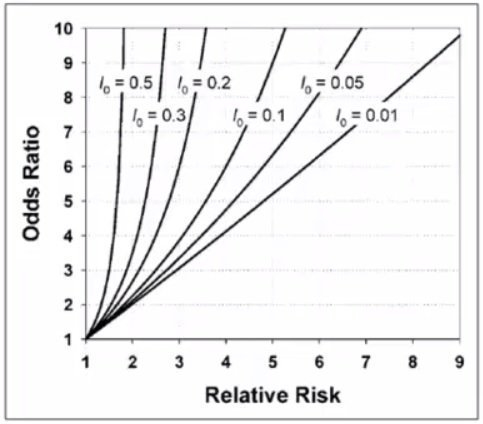



Cecile Janssens A Reminder That Odds Ratios Massively Overestimate Relative Risks When Outcome Is Common In The Population Or By Study Design E G Case Control Studies Io Is Proportion Of Cases




1 A Comparison Of Odds Ratio And Risk Ratio With The Average Marginal Download Scientific Diagram
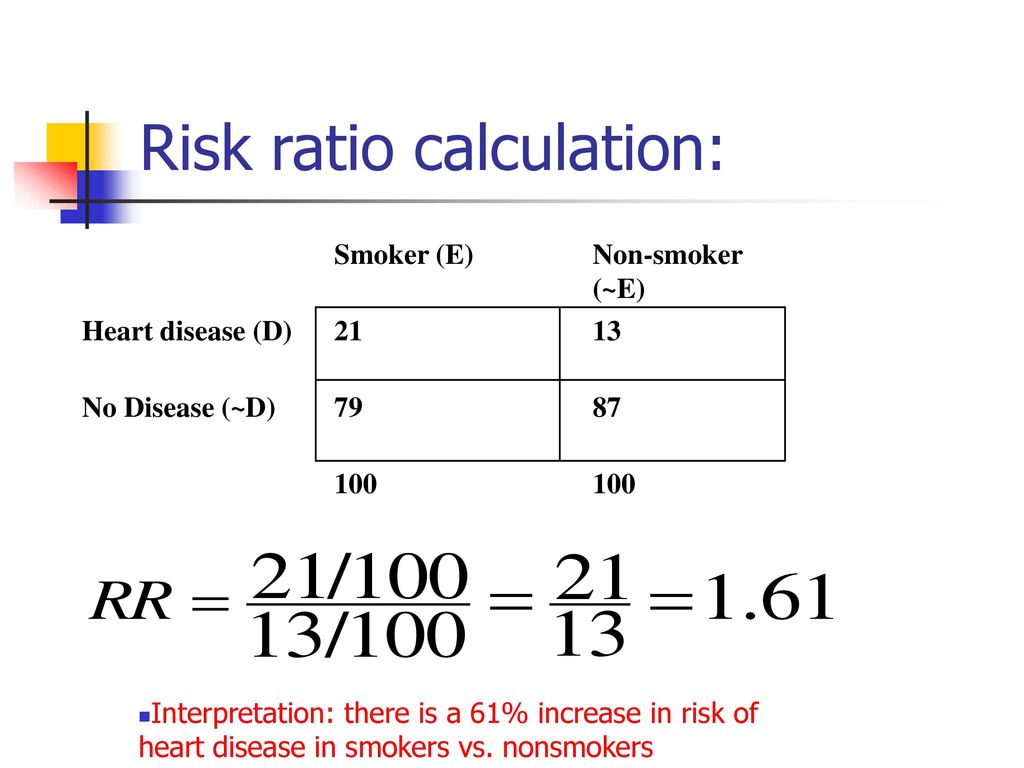



The Binomial Applied Absolute And Relative Risks Chi Square Ppt Download




What Is An Odds Ratio And How Do I Interpret It Critical Appraisal




Pdf When To Use The Odds Ratio Or The Relative Risk




Measures Of Effect Risk Ratio Vs Rate Ratio Risk Factors Disease Rare Disease




Hsrp 734 Advanced Statistical Methods June 5 08




How To Choose Analytical Survey Designs




Statistics Part 13 Measuring Association Between Categorical Data Relative Risk Odds Ratio Attributable Risk Logistic Regression Data Lab Bangladesh




1 Relative Risks Odds Ratios Or Hazard Ratios Of Risk Factors For Download Table




Box 9 2 A Calculation Of Rr Or And Rd




Risk Estimates Relative Risk Ratio And Odds Ratio Analyses For Download Table




Odds Ratio Vs Relative Risk What S The Difference Statology
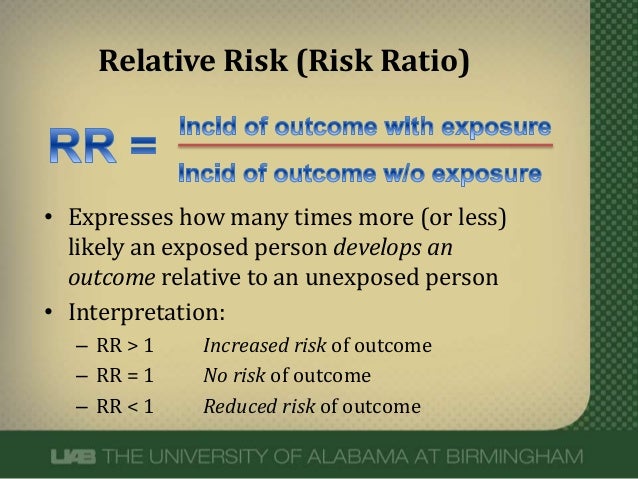



What Does An Odds Ratio Or Relative Risk Mean




Using Odds Ratio In Case Control Studies Youtube




Risk Ratio Versus Odds Ratio Dr Journal Club




Measures Of Effect Relative Risks Odds Ratios Risk Difference And Number Needed To Treat Kidney International
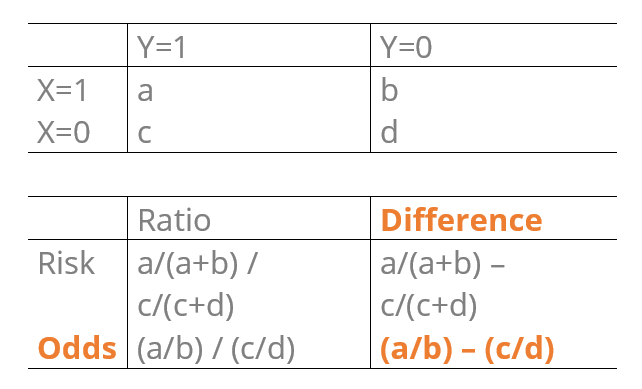



Tim Morris Hate Odds Ratios Hate Risk Ratios Hate Risk Differences Well I M Feeling Cantakerous This Morning And Have Your Back Introducing The Odds Difference Unless You Just Hate Everything




What Are Cross Tables Odds Ratio And The Relative Risk Gcp Service




Odds Ratios And Risk Ratios Youtube




Pdf The Relative Merits Of Risk Ratios And Odds Ratios Semantic Scholar
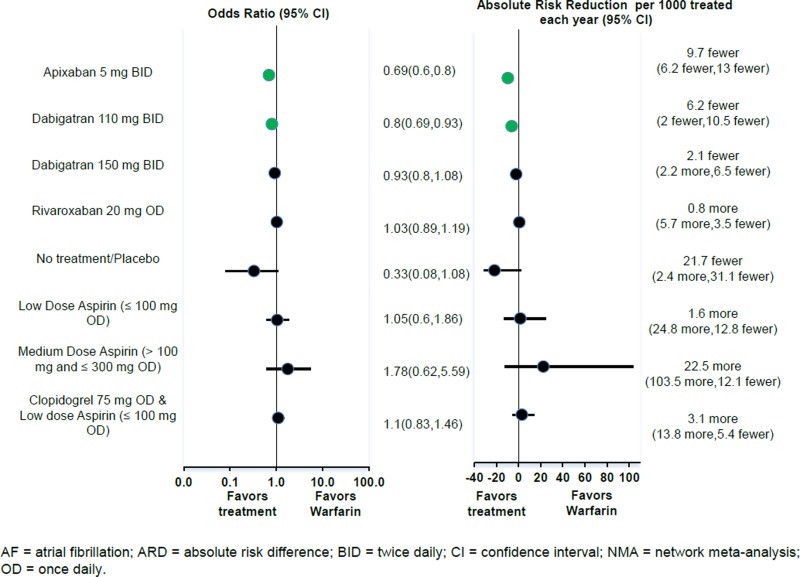



Figure 3 Odds Ratio And Absolute Risk Difference Of Major Bleeding For Antithrombotic Therapies Relative To Adjusted Dose Warfarin For Patients With Af Fixed Effects Nma Antithrombotic Agents For The Prevention Of Stroke




Relative Risk And Odds Ratio




Simple Way To Visualise Odds Ratios In R Stack Overflow




When Can Odds Ratios Mislead The Bmj



Plos One Ethnicity Modifies Associations Between Cardiovascular Risk Factors And Disease Severity In Parallel Dutch And Singapore Coronary Cohorts



Definition And Calculation Of Odds Ratio Relative Risk Stomp On Step1
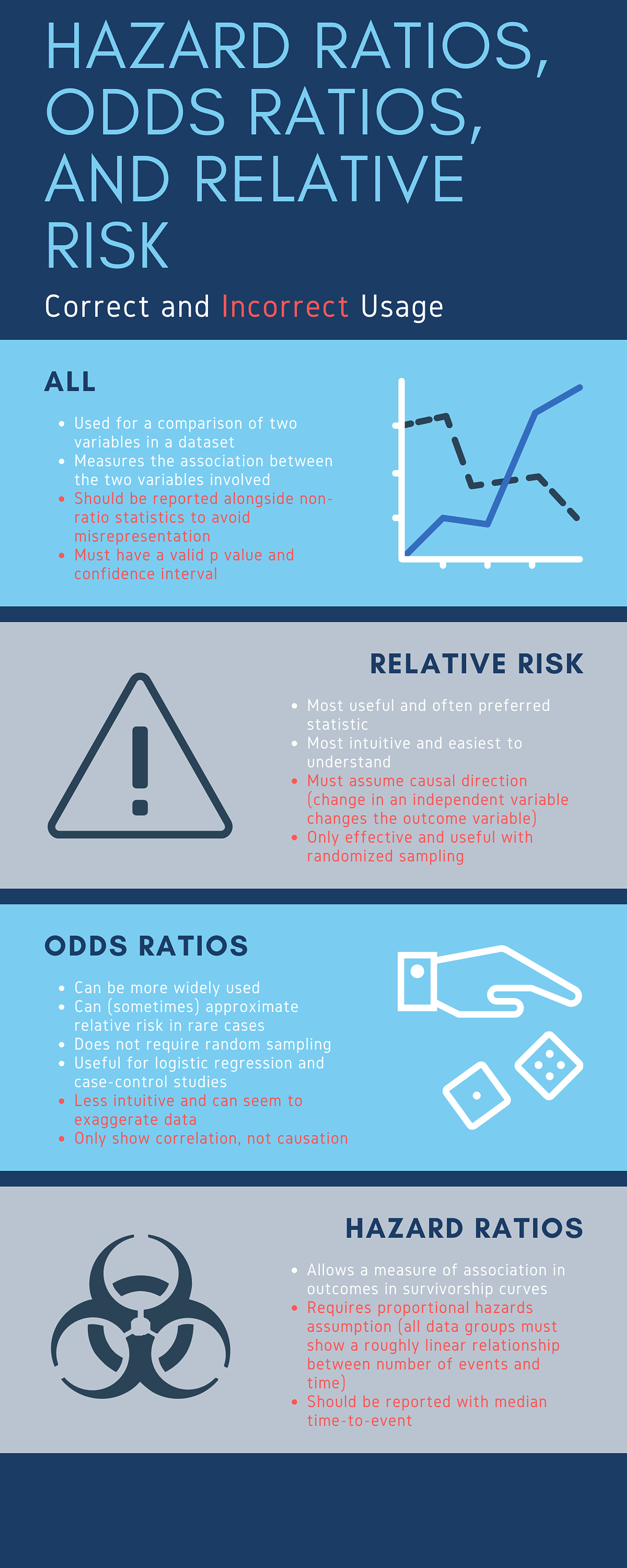



Cureus What S The Risk Differentiating Risk Ratios Odds Ratios And Hazard Ratios
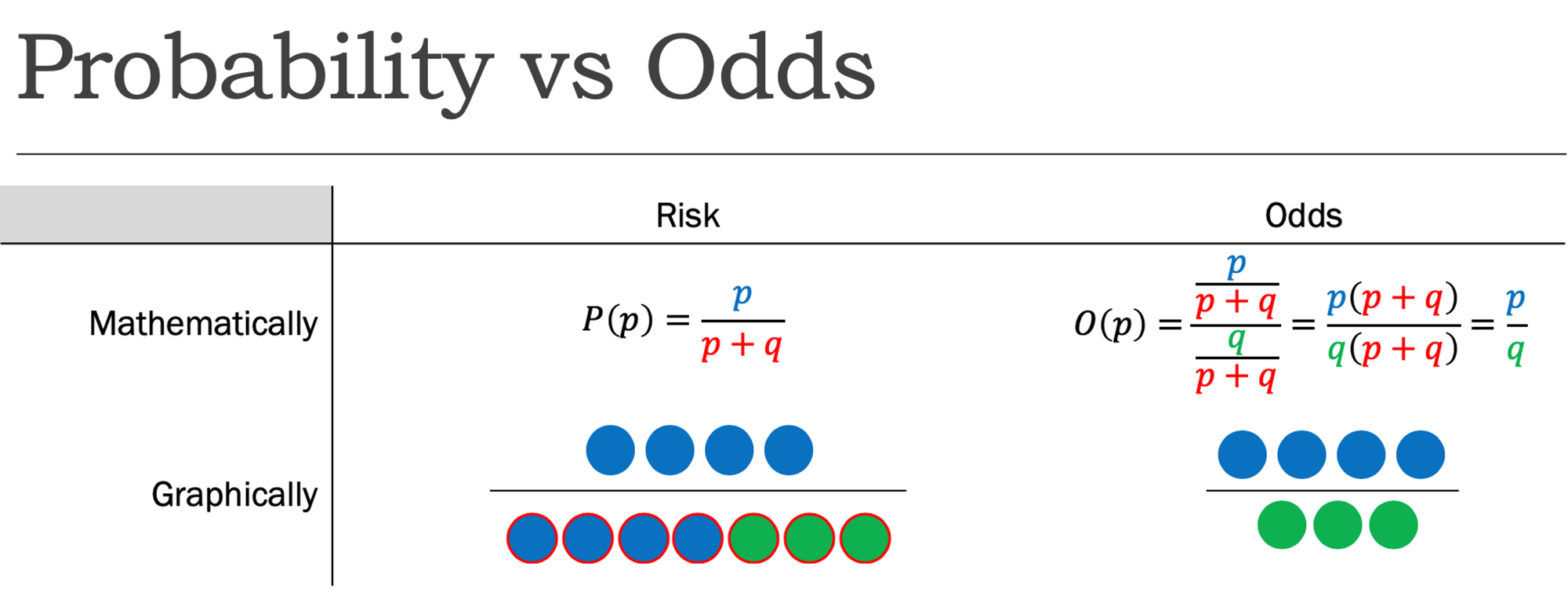



Cureus What S The Risk Differentiating Risk Ratios Odds Ratios And Hazard Ratios




Odds Ratios Are Far From Portable A Call To Use Realistic Models For Effect Variation In Meta Analysis Journal Of Clinical Epidemiology
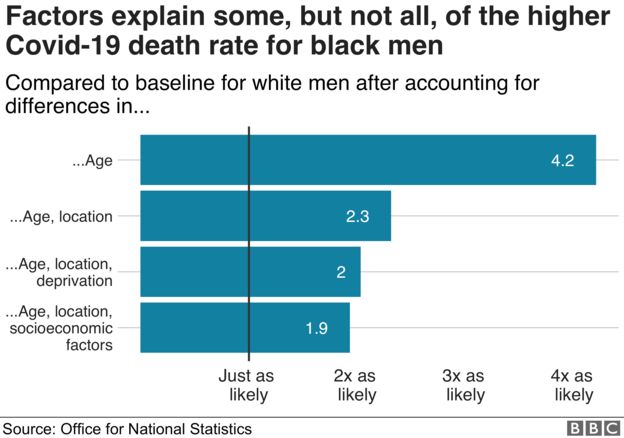



Against All Odds How To Visualise Odds Ratios To Non Expert Audiences Henry Lau




Calculation Of Odds Ratios Or And Relative Risk Rr Derived From Download Scientific Diagram




Relative Risks And Odds Ratios Simple Rules On When And How To Use Them Mckenzie European Journal Of Clinical Investigation Wiley Online Library




How To Be Awesome At Biostatistics And Literature Evaluation Part Ii Tl Dr Pharmacy




Relative Risk Versus Odds Ratio Usmle Biostatistics 4 Youtube




Odds Ratio Vs Relative Risk What S The Difference Statology




Hazard Ratio Vs Odds Ratio ただの悪魔の画像




Calculation And Interpretation Of Odds Ratio Or And Risk Ratio Rr Youtube




Probability Odds Ratio And Relative Risk Gpraj
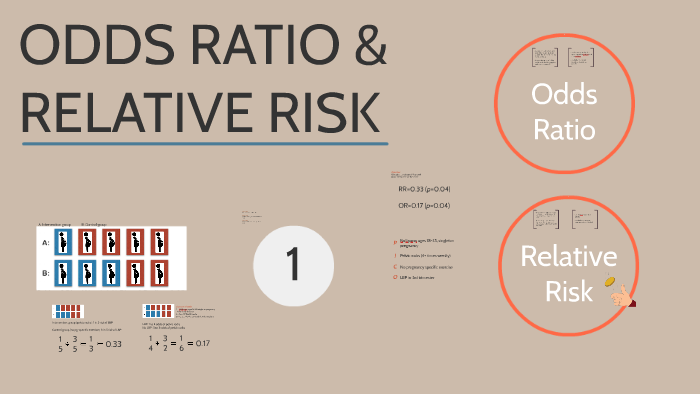



Odds Ratio Relative Risk By Susi Delaney




How To Interpret And Use A Relative Risk And An Odds Ratio Youtube




Converting An Odds Ratio To A Range Of Plausible Relative Risks For Better Communication Of Research Findings The Bmj




Odds Ratios Versus Relative Risk




File Risk Ratio Vs Odds Ratio Svg Wikimedia Commons



Odds Ratio
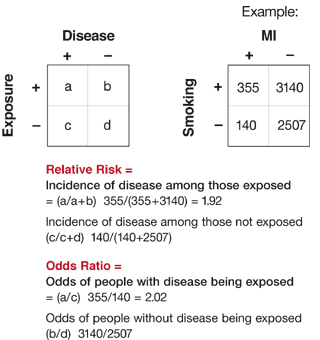



Relative Risks And Odds Ratios What S The Difference Mdedge Family Medicine




How To Calculate Odds Ratio And Relative Risk In Excel Statology
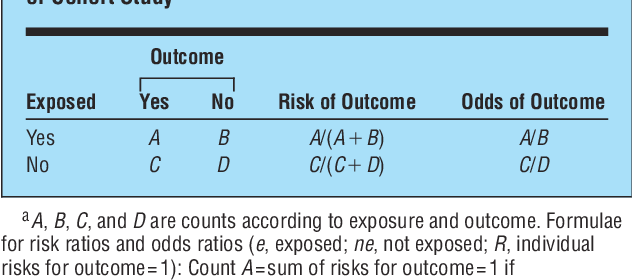



Pdf The Relative Merits Of Risk Ratios And Odds Ratios Semantic Scholar




Chapter 6 Choosing Effect Measures And Computing Estimates Of Effect Cochrane Training




Relative Risk And Odds Ratio Usmle The Journey
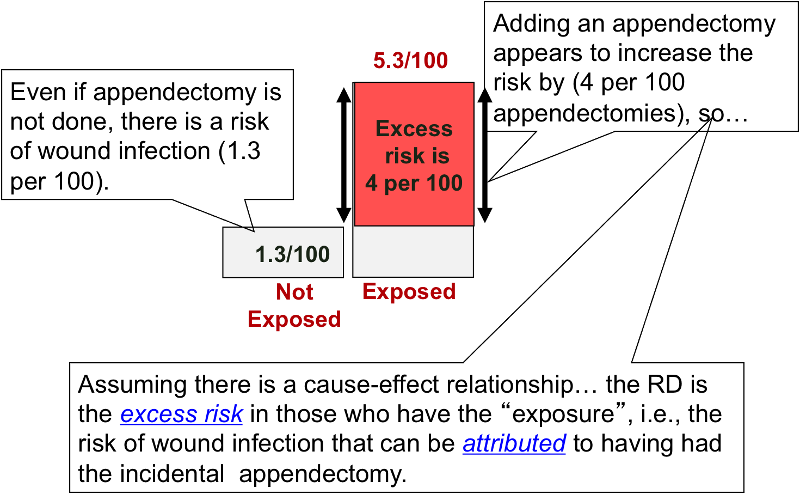



Risk Differences And Rate Differences




A Stratified Analysis




Glossary Of Research Terminology




Measures Of Effect Relative Risks Odds Ratios Risk
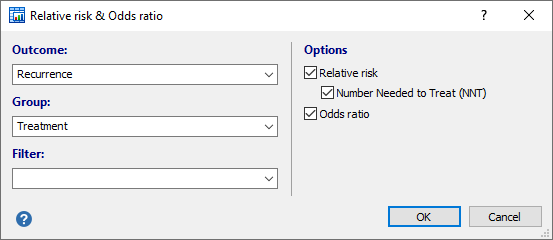



Relative Risk Odds Ratio
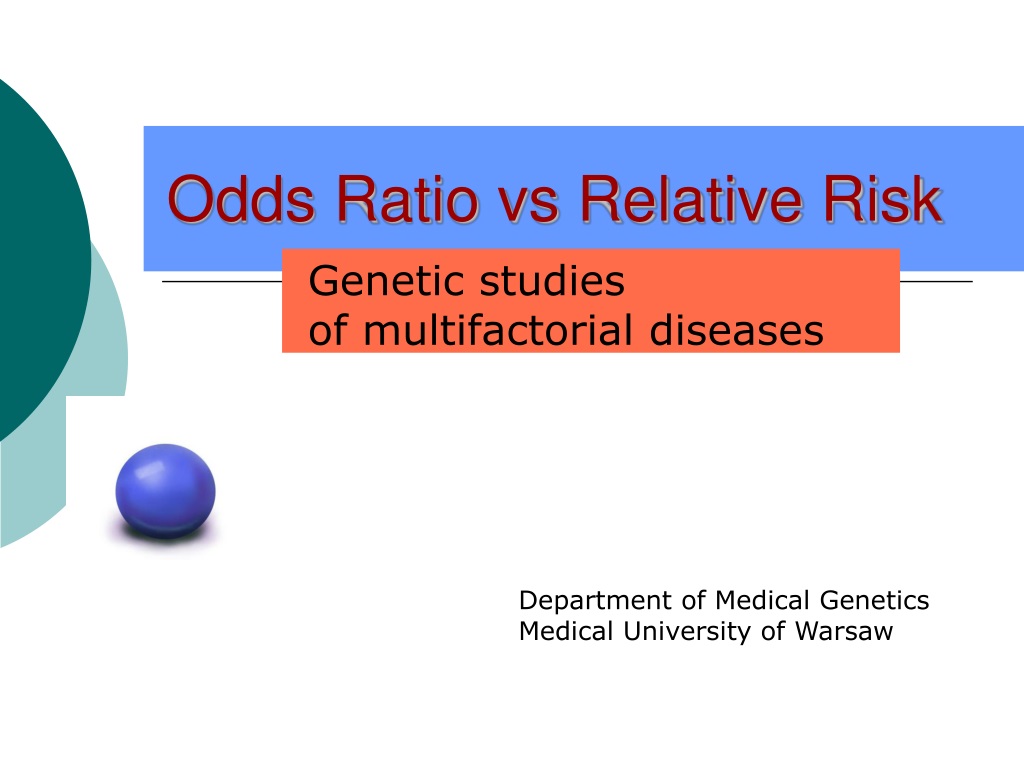



Ppt Odds Ratio Vs Relative Risk Powerpoint Presentation Free Download Id




Definition And Calculation Of Odds Ratio Relative Risk Stomp On Step1



Attributable



Research Statistics Basics Contents 1 Basic Concepts 2 References Basic Concepts Null Hypothesis The Hypothesis That The Independent Variable Has No Effect On The Dependent Variable For Example Steroids Do Not Improve Outcomes In Ards Would Be



27 Sep 01 Draft




Understanding Systematic Reviews And Meta Analysis Archives Of Disease In Childhood
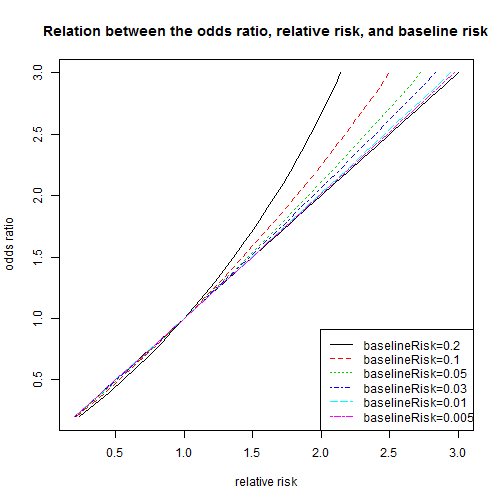



Relation Between The Odds Ratio Relative Risk And Baseline Risk
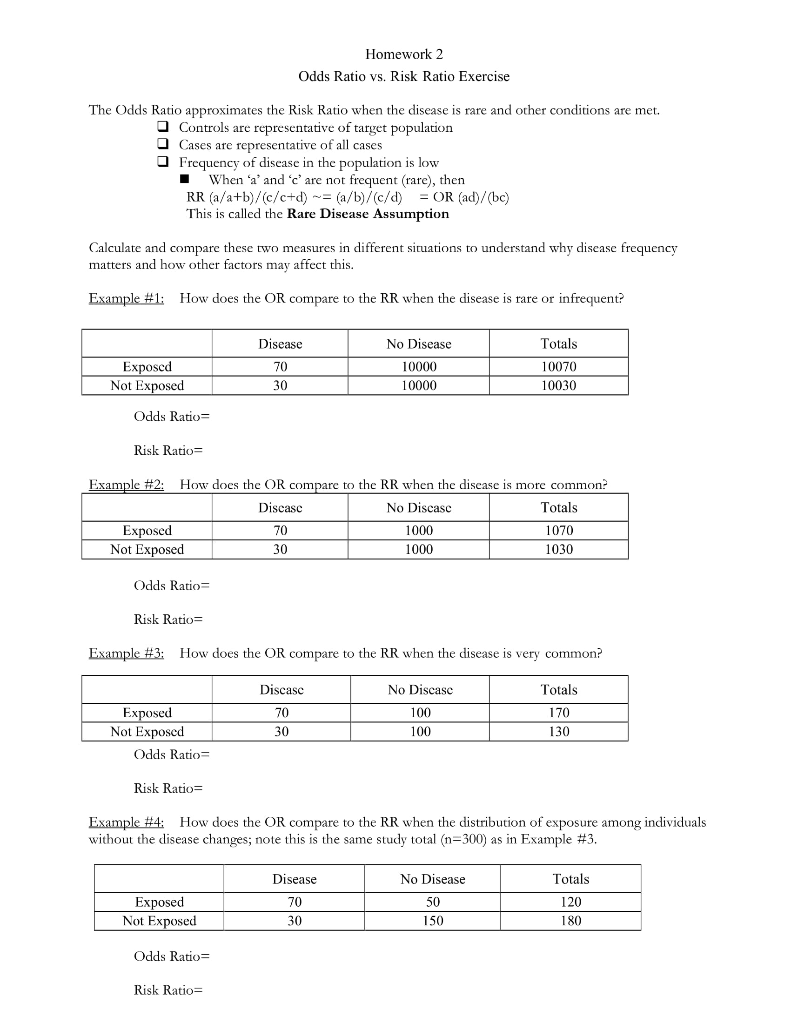



Solved Homework 2 Odds Ratio Vs Risk Ratio Exercise The Chegg Com




Example 8 29 Risk Ratios And Odds Ratios R Bloggers
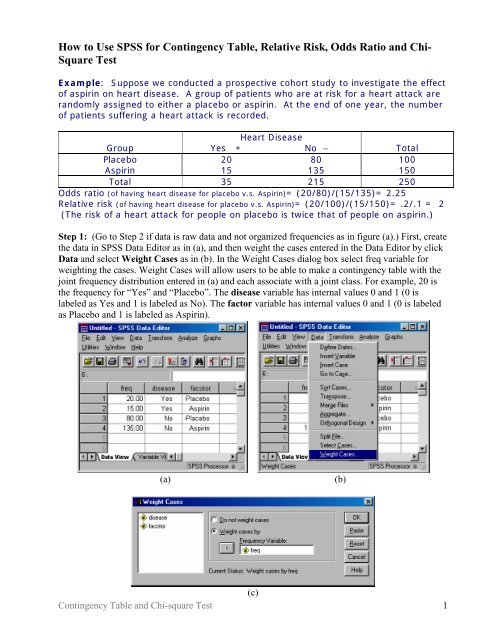



How To Use Spss For Contingency Table Relative Risk Odds Ratio
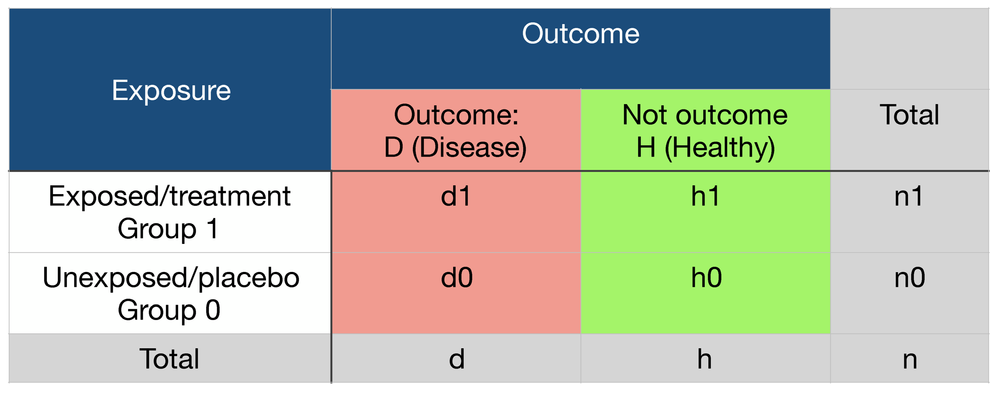



Probability Odds Ratio And Relative Risk Gpraj



Risk Ratio
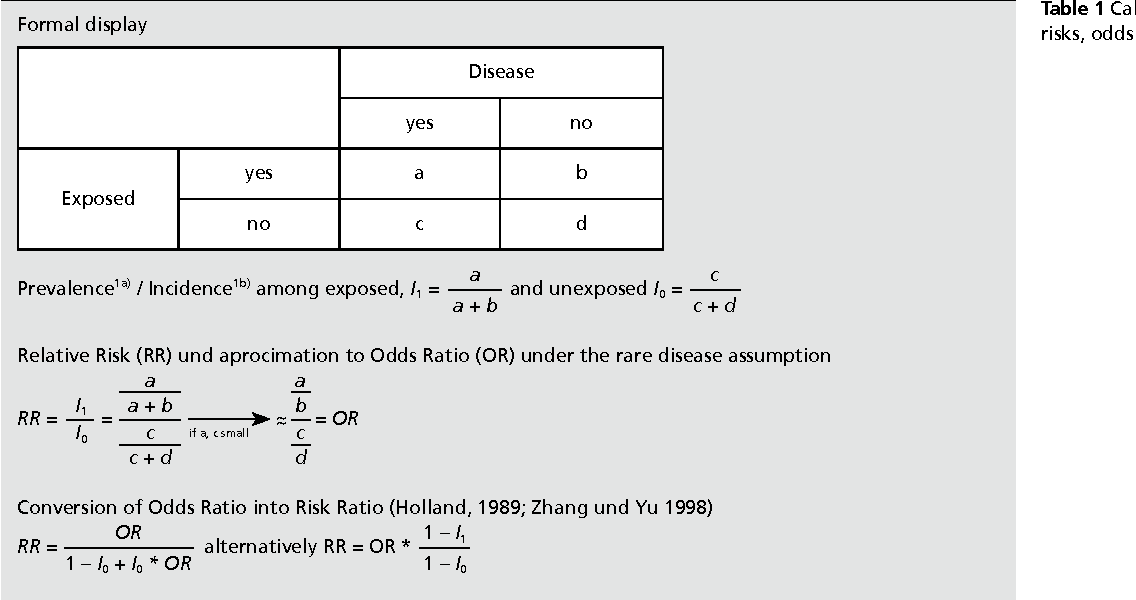



Pdf When To Use The Odds Ratio Or The Relative Risk Semantic Scholar
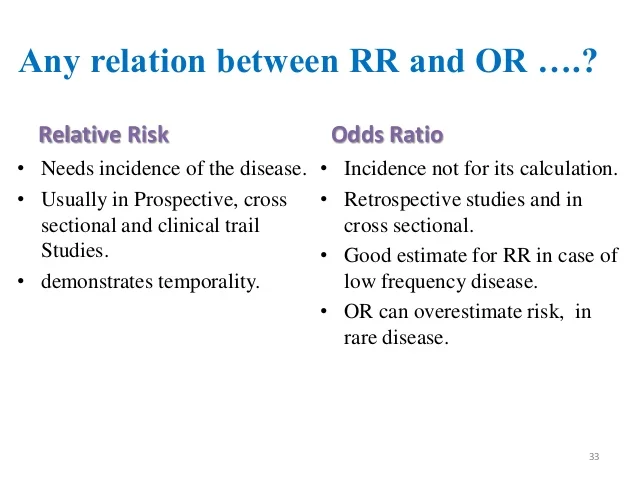



Measuring Of Risk




Solved Odds Ratio Vs Risk Ratio Exercise The Odds Ratio Chegg Com




A Most Odd Ratio Interpreting And Describing Odds Ratios Abstract Europe Pmc




Mixing Of Confounding And Non Collapsibility A Notable Deficiency Of The Odds Ratio American Journal Of Cardiology



What Is The Difference Between The Risk Ratio Rr And The Odds Ratio Or Quora
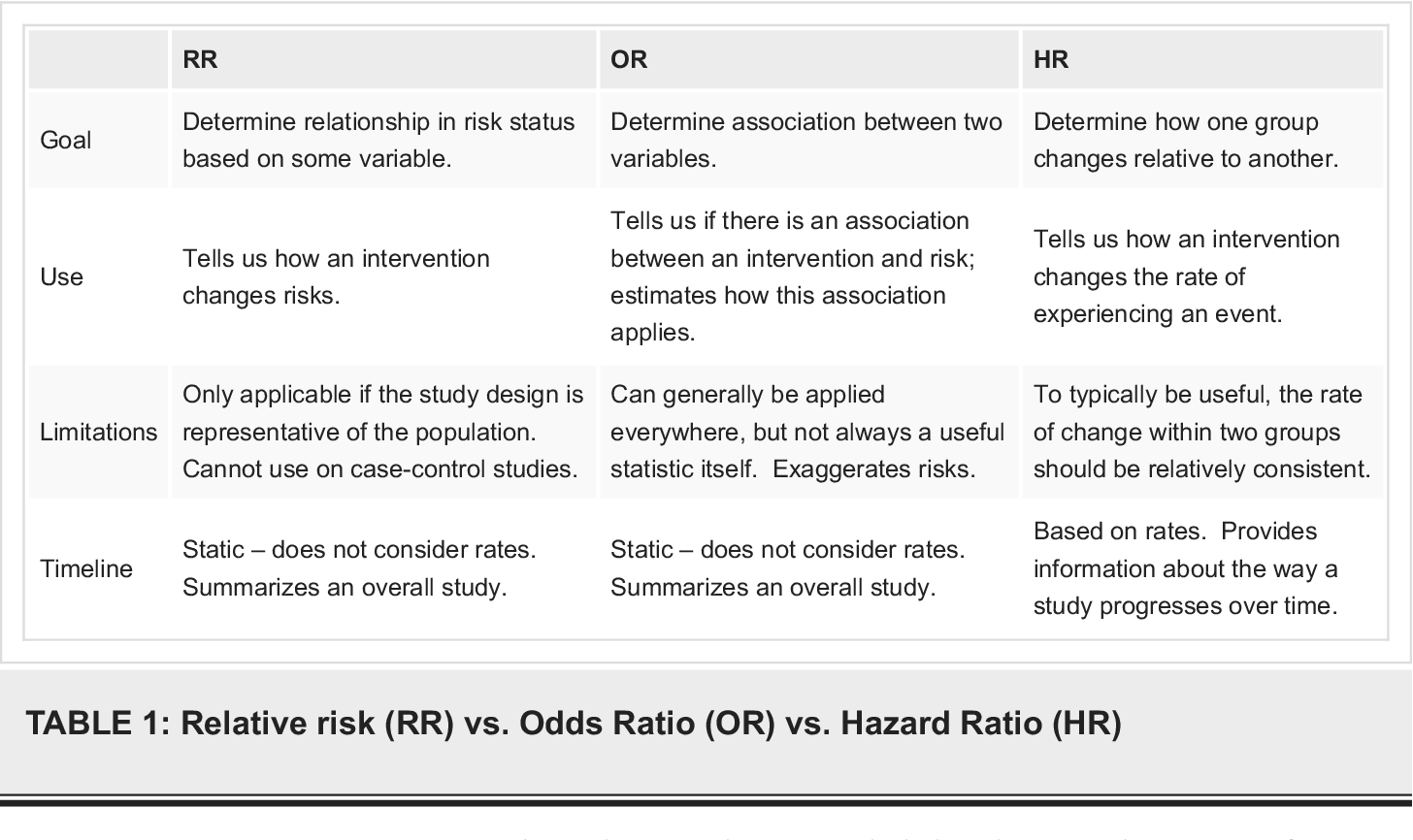



Pdf What S The Risk Differentiating Risk Ratios Odds Ratios And Hazard Ratios Semantic Scholar




Figure 2 X 2 Table With Statpearls Ncbi Bookshelf




Research Techniques Made Simple Interpreting Measures Of Association In Clinical Research Sciencedirect
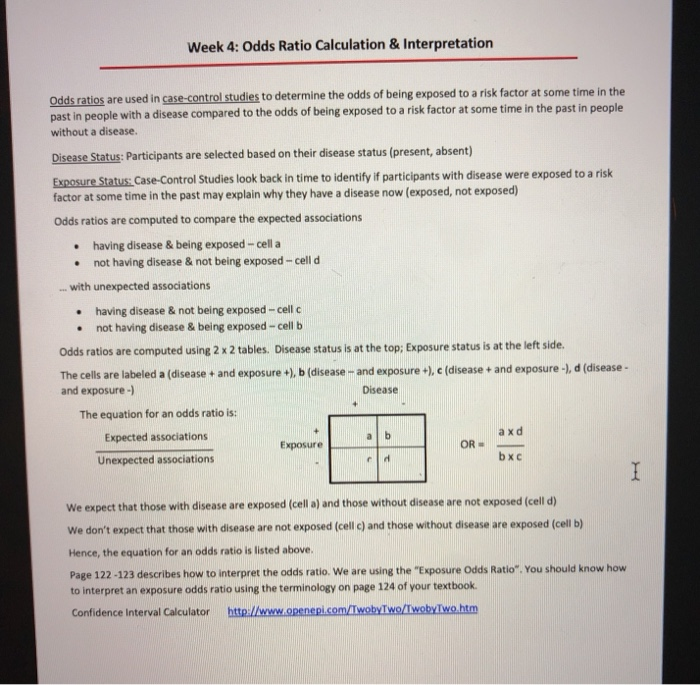



Solved Week 4 Odds Ratio Calculation Interpretation Odds Chegg Com




Math Formula To Reproduce A Plot Comparing Relative Risk To Odds Ratios Cross Validated



0 件のコメント:
コメントを投稿